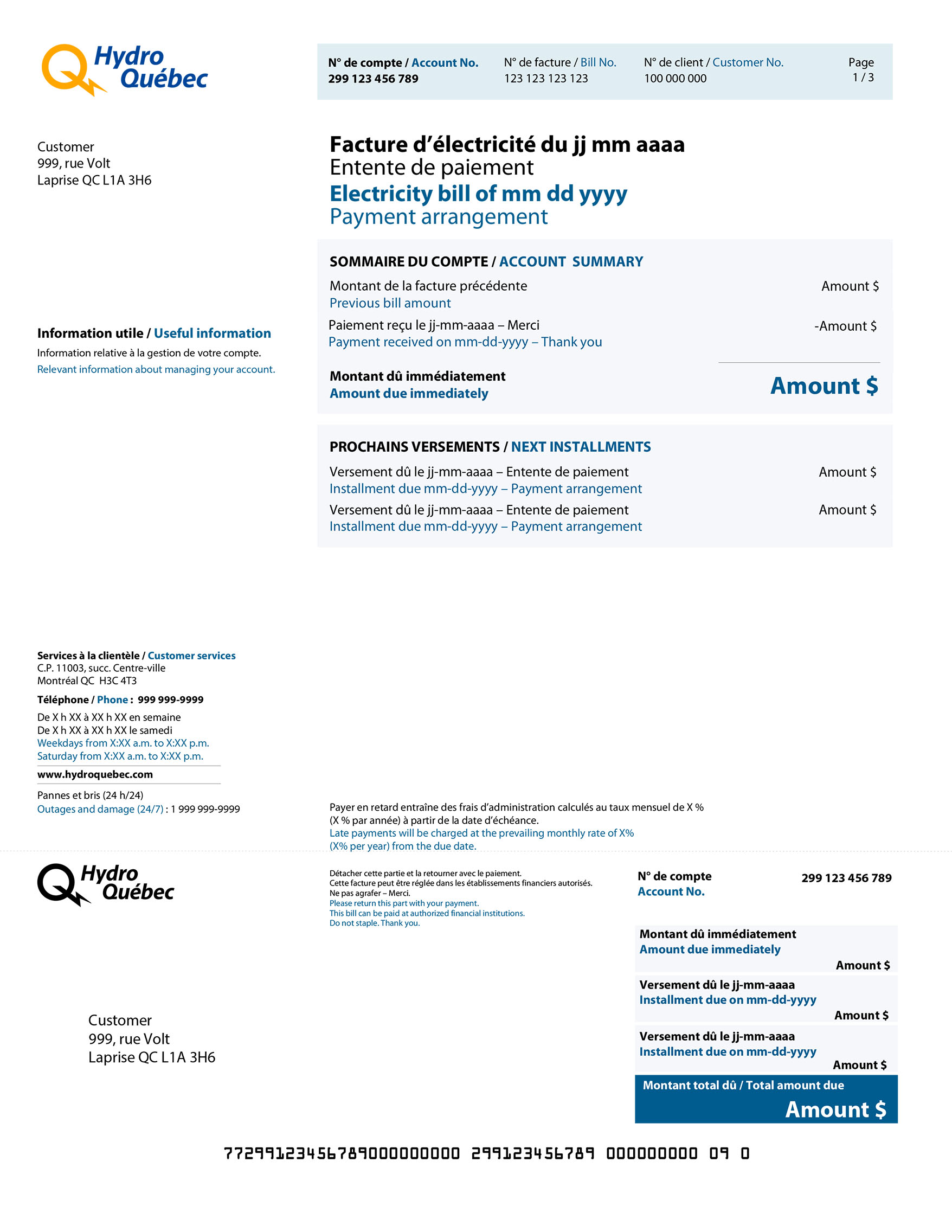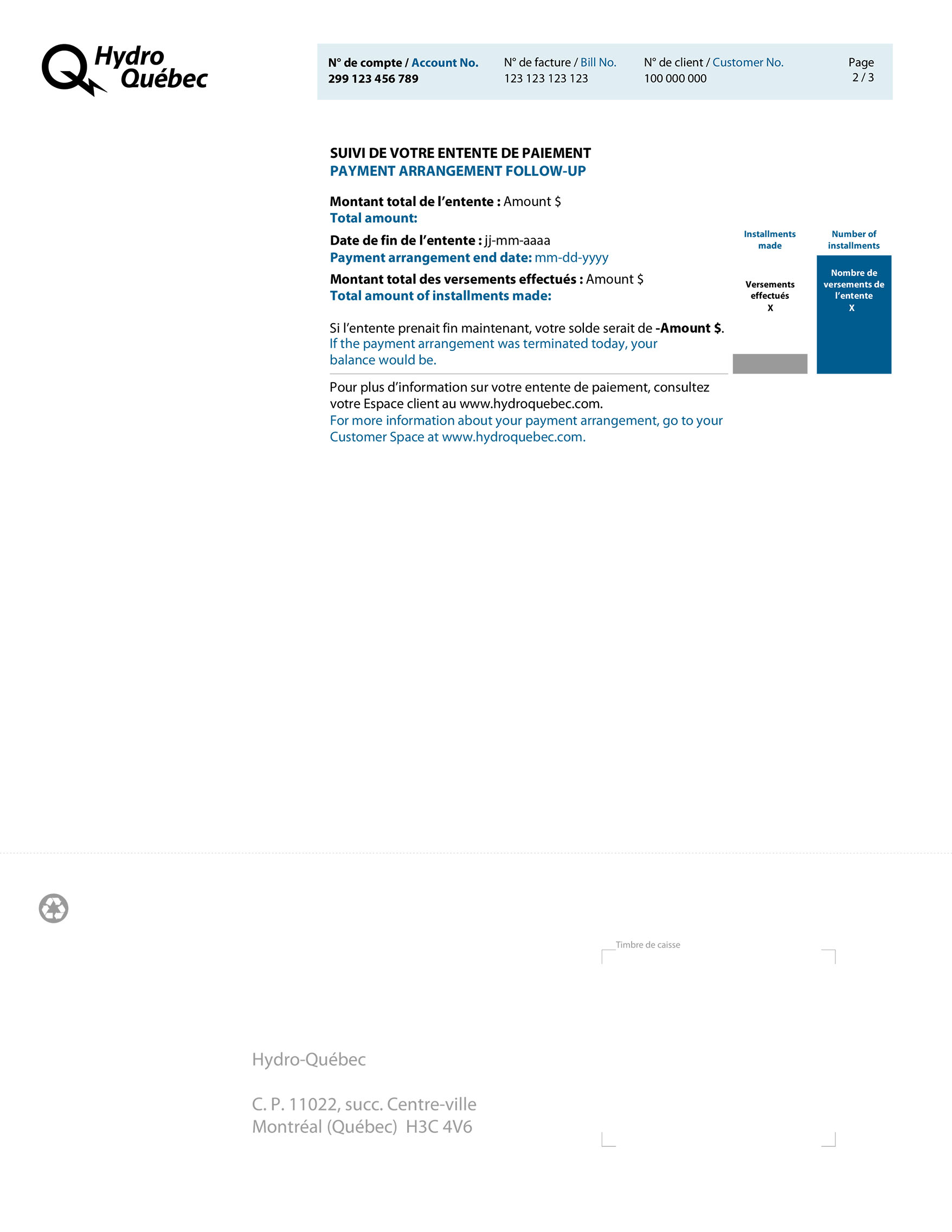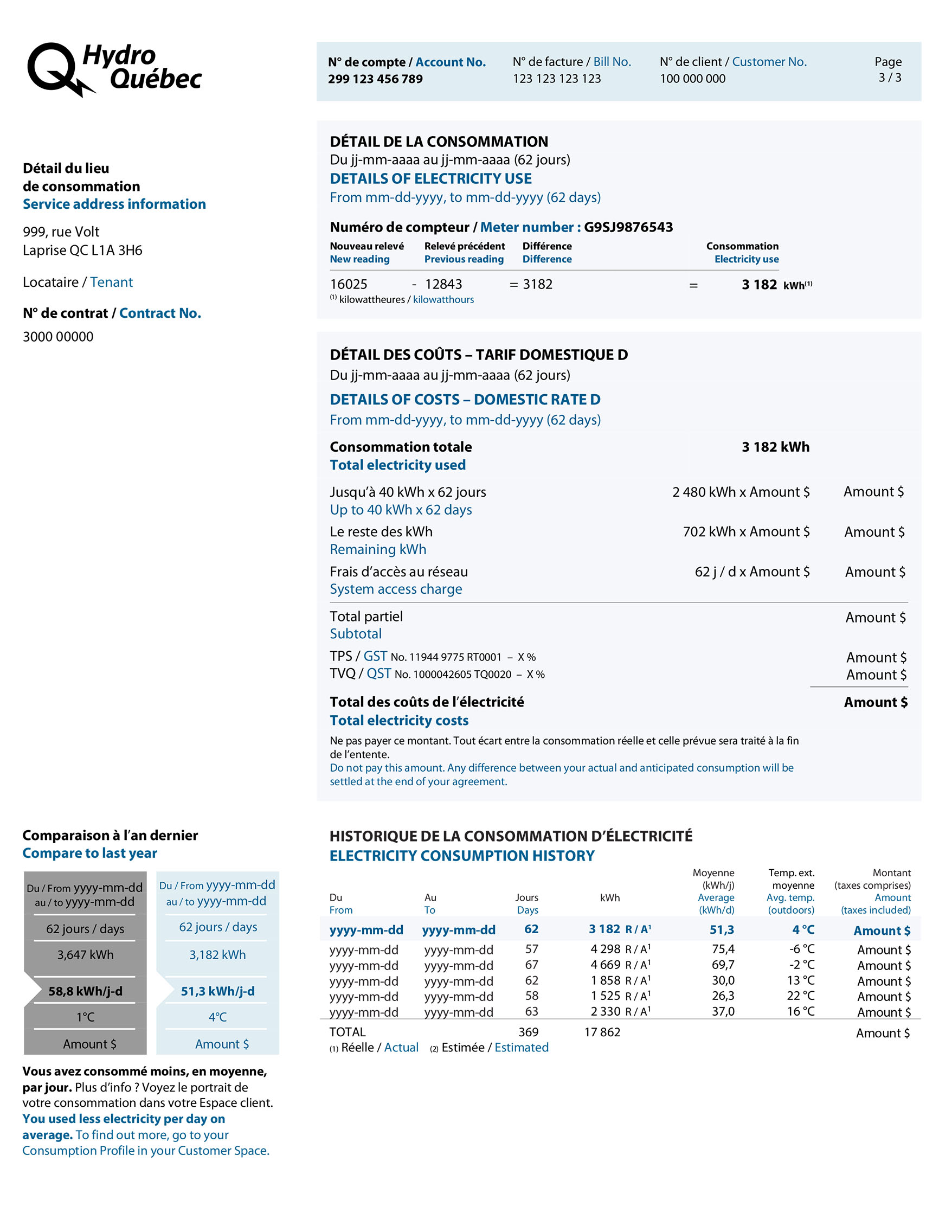Understanding your standard bill with payment arrangement
Your bill shows the installments set your payment arrangement with us.
The Charter of the French language and its regulations govern the consultation of English‑language content .
Your bill shows the installments set your payment arrangement with us.
Transactions since your last bill: installments due, payments made, credits and amount due.
Message of general interest or information about our services.
Installments due.
Upcoming installment amounts with due dates and total amount due.
Return the stub with your payment if you pay by mail.

Transactions since your last bill: installments due, payments made, credits and amount due.
Message of general interest or information about our services.
Installments due.
Upcoming installment amounts with due dates and total amount due.
Return the stub with your payment if you pay by mail.

Section that shows number of installments paid and total number of installments established under the arrangement. The arrangement ending date and the total amount covered are also shown.
A personalized message tells you the amount you would have to pay if the arrangement ended on the billing date.
To find out more about your payment arrangement, visit your Customer Space.

Service address, contract holder and contract number.
Period covered by this bill, number of days, meter serial number, meter-reading data and calculation of amount of electricity used.
In the example: New meter reading (16025) − previous reading (12843) = kilowatthours used (3 182)
Detailed calculation of the cost of electricity used, based on applicable rates and number of days, along with any credits or other charges (if applicable) plus taxes. This is the total cost of the electricity you have used, but it is not the amount you have to pay, because you have a payment arrangement.
Kilowatthours used in billing period = 3 182 kWh
Energy used, up to the product of 40 kWh times the number of days in the billing period (1st tier). The total of 2 480 kWh is calculated as follows:
40 kWh × 62 days (days in billing period)
Electricity used beyond first tier (2nd tier). Here’s how it’s calculated:
3 182 kWh (kilowatthours used) − 2 480 (kilowatthours calculated for the 1st tier) = 702 kWh
The system access charge is the amount you pay for the service itself, regardless of how much electricity you use. Here’s how it’s calculated:
System access charge per day x 62 days (billing period)
New table that compares a number of variables with the same period last year: number of days in period, total electricity use, average daily use, average outdoor temperature and electricity cost.
A personalized message tells you whether your average daily electricity use is higher, lower or similar to that of the same period last year.
You can see your electricity use in kilowatthours or in dollars and note how it changes from hour to hour using the Energy Performance Indicator in your Customer Space.
Information on your electricity use over the past year. The table now gives the average outdoor temperature in your region to show how the weather affects your electricity use, if you heat with electricity.